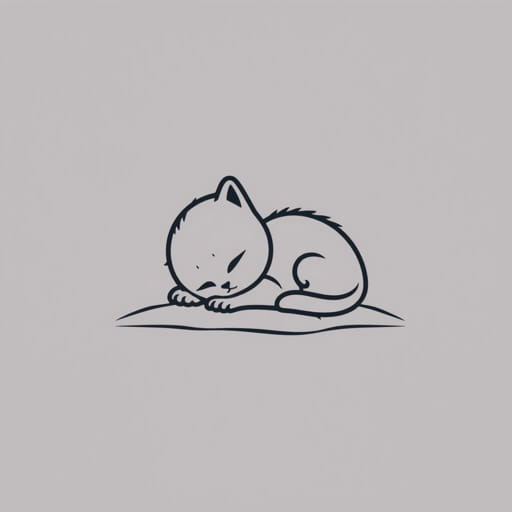What Is A Stillborn Kitten
The birth of kittens is usually a moment of excitement and joy for cat owners or breeders. However, sometimes not every kitten in a litter survives. A stillborn kitten is one that is born without signs of life. This unfortunate occurrence can be emotionally challenging and often raises many questions about what went wrong, whether it could have been prevented, and what steps should be taken afterward. Understanding what a stillborn kitten is, along with the causes and implications, is essential for anyone involved in feline care or breeding.
Definition and Characteristics of a Stillborn Kitten
What Does ‘Stillborn’ Mean?
A stillborn kitten is a kitten that has died in the womb and is delivered without any signs of life. It may die during the birthing process (intrapartum) or even before labor begins (antepartum). Unlike a kitten that is born alive but weak and then dies shortly after birth, a stillborn kitten never takes its first breath.
Physical Signs
Stillborn kittens may present with:
- Cold and lifeless body upon birth
- No heartbeat or respiratory movement
- Rigid or limp body, depending on how long the kitten has been deceased
- Possible deformities or discoloration if death occurred earlier in the pregnancy
Common Causes of Stillbirth in Kittens
Infections
Viral, bacterial, or parasitic infections in the mother cat (queen) during pregnancy can cross the placenta and affect the kittens. Common infections include feline panleukopenia, feline leukemia virus (FeLV), and toxoplasmosis. These pathogens may cause fetal death at any stage of development.
Genetic Abnormalities
Congenital defects or chromosomal abnormalities can prevent normal development, leading to stillbirth. These may occur randomly or be inherited traits, especially in line-bred or inbred populations.
Placental Insufficiency
If the placenta does not supply enough oxygen and nutrients to the fetus, it can lead to developmental failure and death in the womb. This condition may affect one or multiple kittens in a litter.
Trauma or Stress During Pregnancy
Accidents, physical trauma, or high levels of stress in the pregnant queen can contribute to stillbirth. This includes fights with other cats, loud environments, or being moved too often during gestation.
Birthing Complications (Dystocia)
Prolonged labor or obstruction in the birth canal can cause a kitten to die before being born. Oxygen deprivation during a difficult birth is a significant cause of stillbirth.
Maternal Health Issues
Queens with underlying health conditions such as diabetes, malnutrition, or thyroid disorders may have difficulty maintaining a healthy pregnancy. Poor maternal health increases the risk of stillborn kittens.
How to Tell if a Kitten Is Stillborn
Signs Immediately After Birth
A stillborn kitten will not move, breathe, cry, or respond to touch. The mother cat might attempt to lick or nudge the kitten to stimulate breathing, but if it remains unresponsive, it is likely stillborn.
Differences from a Weak Newborn
It is essential to distinguish between a stillborn kitten and one that is alive but weak. A weak kitten may show minimal movement, have trouble breathing, or be colder than normal. These kittens may be saved with immediate veterinary assistance and neonatal care.
What to Do If a Stillborn Kitten Is Born
Do Not Panic
While distressing, stillbirths do occur naturally. Gently remove the stillborn kitten from the nesting area to give the mother space to focus on her living offspring.
Check for More Kittens
Monitor the mother cat to ensure she is finished delivering. Sometimes a stillborn kitten is just one of several, and more kittens may still be on the way. Consult a veterinarian if there is a long pause between births or signs of distress.
Consider a Veterinary Check-Up
If a stillbirth occurs, especially if it is not an isolated event, take the mother and surviving kittens to the vet. A professional evaluation can help determine the cause and assess the health of the remaining kittens and the queen.
Emotional and Practical Impacts
Emotional Toll on Owners
Losing a kitten before it has even had a chance to live can be heartbreaking, especially for breeders or cat owners who have been anticipating the litter. It is important to give yourself space to grieve and seek support if needed.
Impact on the Mother Cat
Some cats may seem unaffected by the loss of a stillborn kitten, while others might display signs of mourning, anxiety, or confusion. Monitor her for behavioral changes and consult a vet if concerns arise.
Preventive Measures
Regular Veterinary Care
Prenatal care is essential for a healthy pregnancy. Regular check-ups, proper vaccinations, and parasite control can significantly reduce the risk of infections and complications that lead to stillbirth.
Nutrition and Environment
A balanced diet and a stress-free environment play key roles in a successful pregnancy. Provide the queen with a quiet, comfortable nesting area and a high-quality diet formulated for pregnant cats.
Avoiding Inbreeding
Responsible breeding practices, including genetic diversity and health screenings, can help minimize congenital defects and inherited disorders that lead to stillbirth.
When Stillbirths Happen Frequently
Recurring Losses
If stillbirth occurs in multiple litters from the same queen or stud, it may be due to an underlying medical or genetic issue. Breeding should be discontinued until a full veterinary investigation is conducted.
Diagnostic Testing
Blood work, imaging, and even necropsies (animal autopsies) on stillborn kittens can provide valuable insight into the cause. This information is crucial for preventing future losses.
A stillborn kitten is a tragic but not uncommon occurrence in feline reproduction. It refers to a kitten that dies before or during birth, often due to infection, congenital defects, or complications during delivery. While emotionally distressing, it’s important to understand that many factors leading to stillbirth are out of the owner’s control. However, preventive care, responsible breeding practices, and prompt veterinary attention can reduce the likelihood of such outcomes. By learning about stillbirth in kittens, cat owners and breeders can be better prepared to provide the best care for both mother cats and their future litters.
